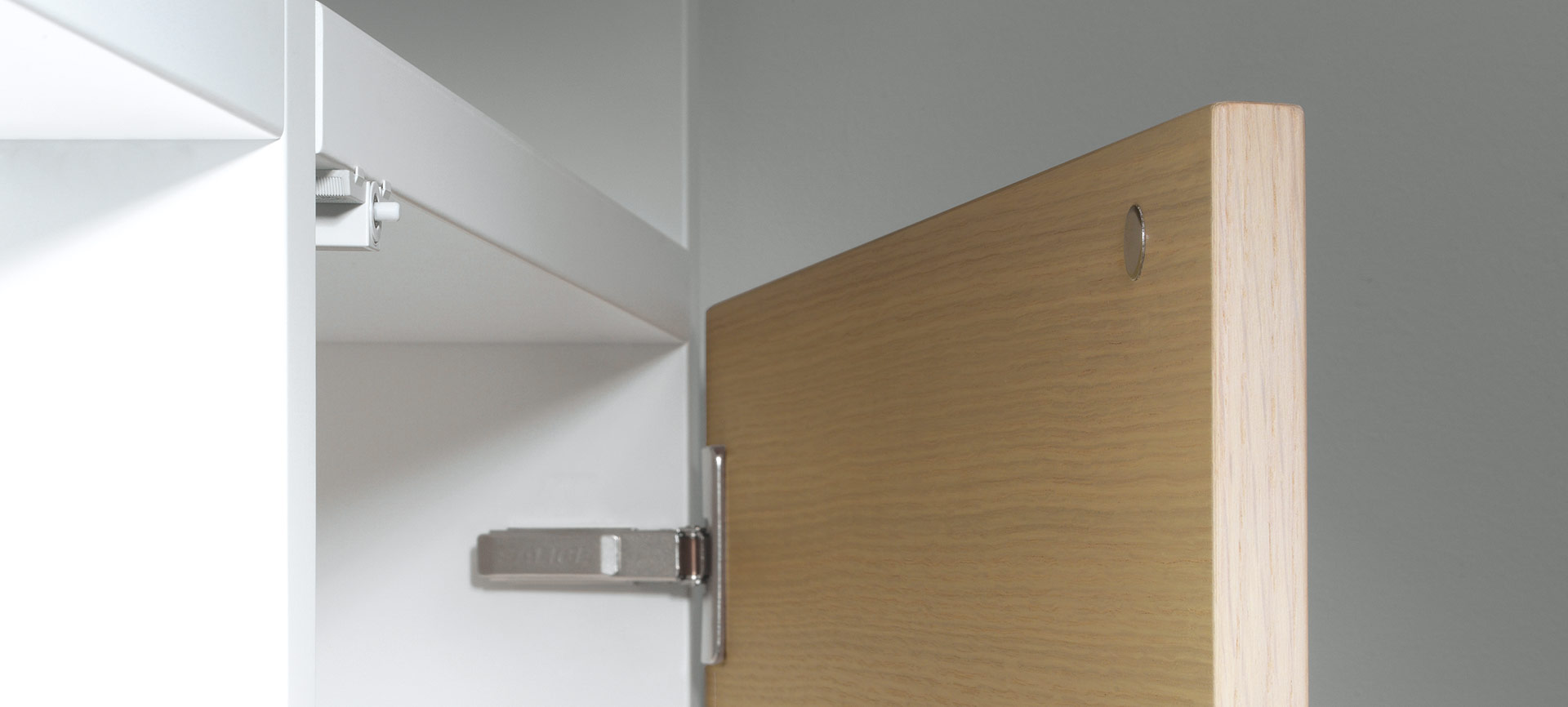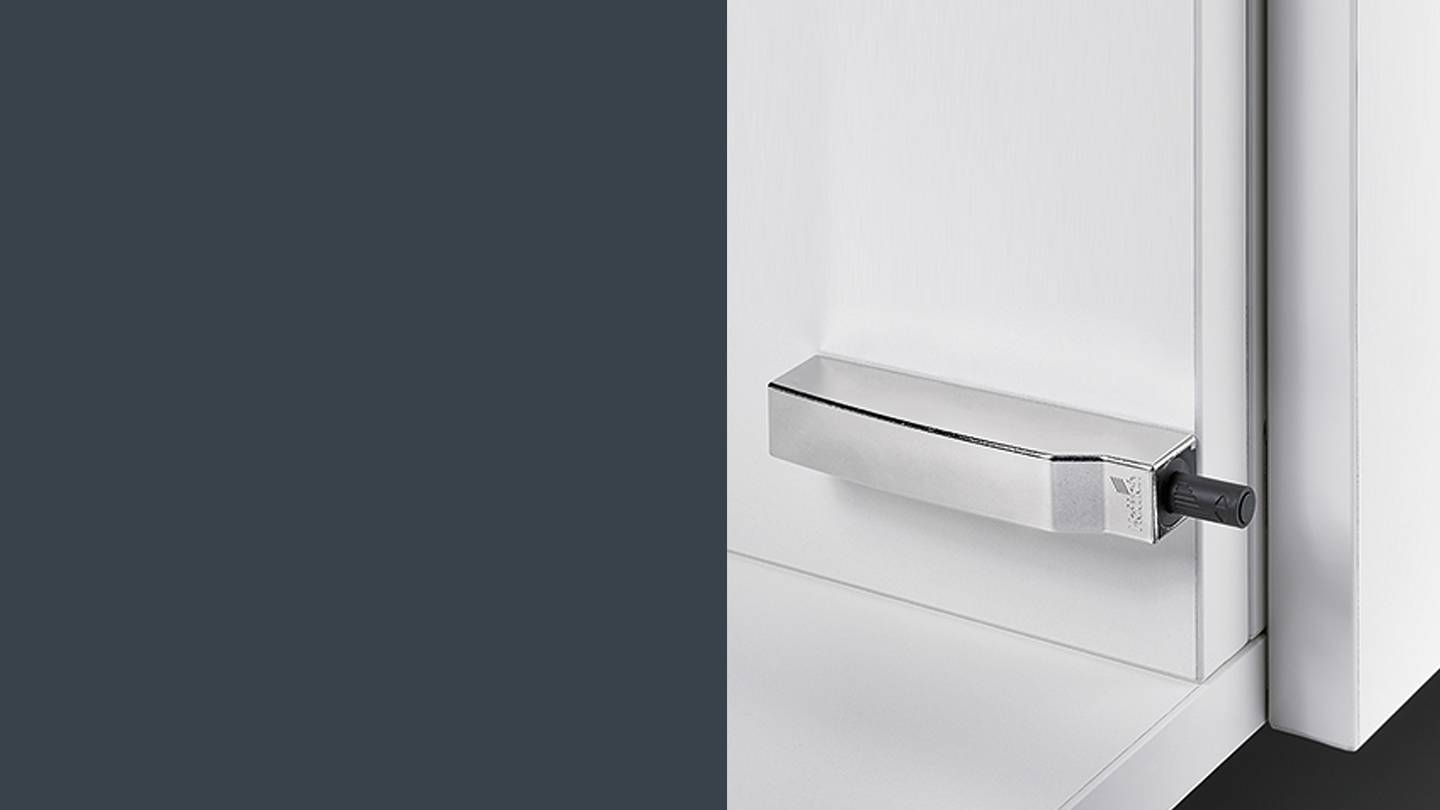Types of Push-to-Open Cabinet Doors

So, you want to ditch those pesky knobs and embrace the sleek, futuristic world of push-to-open cabinets? Excellent choice! Let’s dive into the glorious mechanics behind these silent, self-opening marvels. Prepare for a whirlwind tour of hinges, dampers, and other magical components.
Cabinet door push to open – Push-to-open systems aren’t just a single trick pony; they come in a variety of styles, each with its own personality (and price tag!). The main differences lie in the type of mechanism used, the visibility of the hardware, and the materials employed. Let’s break it down, shall we?
Push-to-Open Mechanisms
The heart of any push-to-open system is its mechanism. Think of it as the secret handshake that makes the magic happen. Here’s a peek behind the curtain:
- Hinge-Based Systems: These are the workhorses of the push-to-open world. Tiny, powerful hinges with integrated springs or pneumatic pistons provide the oomph to open the door with a gentle push. They’re generally easy to install and offer a clean look, especially when concealed.
- Catch-Based Systems: Imagine a tiny magnetic latch holding the door closed. A push overcomes the magnetic force, releasing the door. These are often simpler and cheaper than hinge-based systems, but they might not be as smooth or reliable over time.
- Damper Systems: These systems add a touch of elegance – and quiet! – to the opening and closing process. Dampers slow the movement of the door, preventing it from slamming shut. They’re typically integrated into the hinge or catch mechanism.
Aesthetic Comparison of Push-to-Open Systems
Looks matter, right? Let’s compare the visual impact of different push-to-open systems.
| Mechanism Type | Visual Appeal | Cost | Durability |
|---|---|---|---|
| Concealed Hinge | Sleek, minimalist; hardware is hidden | Medium to High | Generally high, depending on quality |
| Visible Hinge | Can be a design feature, depending on hinge style | Low to Medium | Varies greatly depending on hinge quality and material |
| Magnetic Catch | Minimalist; no visible hardware (usually) | Low | Can be less durable than hinge systems |
Materials Used in Push-to-Open Cabinet Door Construction
The material of your cabinet doors significantly impacts their look, feel, and longevity. Think of it as choosing the right outfit for your kitchen’s personality.
- Wood: Offers warmth, versatility, and a classic look. Durability varies depending on the type of wood used (oak is a champ, while softer woods might dent easier). Can be stained or painted to match any décor.
- Metal: Modern, sleek, and durable. Aluminum and steel are popular choices, offering resistance to scratches and dents. Can be powder-coated for added protection and a wide array of colors.
- Glass: Adds a touch of sophistication and allows light to pass through. Can be fragile, so careful handling is required. Often paired with metal or wood frames for added strength.
Installation and Maintenance of Push-to-Open Systems

So, you’ve decided to embrace the sleek, futuristic world of push-to-open cabinets? Fantastic! But before you start imagining yourself effortlessly gliding your hands across flawlessly opening doors, let’s talk about getting those bad boys installed and keeping them running smoothly. Think of this as your guide to cabinet-opening nirvana.
Installing a Push-to-Open Cabinet Door System
Installing a push-to-open system isn’t rocket science (unless your cabinets are made of actual rockets, then, well, maybe it is). But with a little patience and the right tools, you’ll be a push-to-open pro in no time. Here’s a step-by-step guide to make the process as smooth as butter (or as smooth as a perfectly functioning push-to-open mechanism).
- Gather your tools: You’ll need a screwdriver (likely Phillips and flathead), a drill with appropriate drill bits, a measuring tape, a pencil, and possibly a level. Safety glasses are your friend here, trust me.
- Plan your attack: Carefully measure and mark the location for the push-to-open mechanism on both the cabinet door and the cabinet frame. Precision is key here; you don’t want a wonky door.
- Drill pilot holes: Using the appropriate drill bit, carefully drill pilot holes where you’ve marked. This prevents the wood from splitting and makes the installation process much easier. Think of it as a friendly pre-game warm-up for your screws.
- Attach the mechanism: Follow the manufacturer’s instructions carefully. Usually, this involves screwing the mechanism onto the cabinet door and the cabinet frame. Make sure everything is aligned perfectly – a crooked mechanism leads to a crooked door.
- Test your masterpiece: Gently push the door. Does it open smoothly? If not, double-check your alignment and screw tightness. If it still doesn’t work, consult the manufacturer’s instructions (or call a friend who’s better at DIY than you are).
- Repeat (if necessary): If you have multiple cabinets, repeat steps 2-5 for each one. You’ll become a push-to-open installation ninja in no time.
Troubleshooting Push-to-Open Mechanisms
Even the best-laid plans can go awry. Sometimes, your perfectly installed push-to-open system might decide to stage a rebellion. Don’t panic! Here’s a table to help you troubleshoot common problems:
| Problem | Cause | Solution |
|---|---|---|
| Door doesn’t open | Mechanism not properly installed or adjusted | Check installation, adjust mechanism according to manufacturer’s instructions. |
| Door opens too easily | Mechanism too sensitive | Adjust mechanism to increase tension. Consult manufacturer’s instructions for specific adjustment methods. |
| Door is sticky or difficult to open | Mechanism is dirty or needs lubrication | Clean and lubricate mechanism with appropriate lubricant (usually silicone-based). |
| Door slams shut | Mechanism is too tight or damaged | Loosen mechanism slightly or replace damaged parts. |
Preventative Maintenance for Push-to-Open Cabinet Doors, Cabinet door push to open
Regular maintenance is your secret weapon in keeping your push-to-open cabinets running smoothly for years to come. Think of it as a little pampering for your hardworking hardware.
- Weekly: Wipe down the mechanism with a damp cloth to remove dust and debris.
- Monthly: Inspect the mechanism for any signs of wear and tear. Listen for any unusual noises.
- Annually: Apply a small amount of silicone-based lubricant to the moving parts of the mechanism. This helps to keep things running smoothly and prevents premature wear.
Design Considerations and Applications: Cabinet Door Push To Open
Push-to-open cabinet systems are all the rage, but are they right for *your* space? Let’s dive into the design considerations and figure out where these sleek systems shine – and where they might leave you scratching your head (and possibly your knuckles). We’ll explore different cabinet styles, room types, and even compare them to their handle-wielding ancestors.
Push-to-open systems offer a clean, modern aesthetic that’s perfect for a variety of applications, but their suitability depends heavily on the overall design and the intended users. Think of it like choosing between a sleek sports car and a trusty station wagon – both get you where you need to go, but one’s better suited for certain situations than the other.
Suitability for Different Cabinet Styles and Room Types
The minimalist appeal of push-to-open systems makes them a natural fit for contemporary kitchens and bathrooms. Imagine a sleek, handle-less kitchen with integrated appliances – the push-to-open cabinets seamlessly blend into the overall design, creating a sophisticated and uncluttered look. In bathrooms, the lack of protruding handles is particularly beneficial, as it prevents the accumulation of moisture and grime, keeping things cleaner for longer. However, in a rustic-style kitchen filled with chunky wooden cabinets, push-to-open might feel out of place, like wearing a tuxedo to a barbecue. A more traditional handle would likely be a better choice in this setting. Bedrooms, however, are a bit of a wildcard; push-to-open systems can work wonderfully in modern, minimalist bedrooms, creating a streamlined look, but might feel less intuitive in a child’s room where easy access is paramount.
Ergonomic Comparison of Push-to-Open and Traditional Systems
Let’s face it, opening cabinets is a fundamental human activity. How easy that is can dramatically affect our daily lives, especially for certain groups of people. The following table compares the ergonomics of push-to-open and traditional handle systems:
| Feature | Push-to-Open | Traditional Handle |
|---|---|---|
| Ease of Use | Generally easy, but can require a precise push; can be challenging for those with limited dexterity. | Generally intuitive, familiar to most users. |
| Accessibility | Can be less accessible for people with arthritis, limited hand strength, or visual impairments. | Handles offer a more tactile and easily grasped option for users with various disabilities. |
| Suitability for Different User Groups | Best suited for healthy adults with good hand strength and dexterity. | More universally accessible, suitable for people of all ages and abilities. |
Consider a family with young children and elderly grandparents. While the sleek aesthetic of push-to-open might appeal to the adults, the children might struggle to open the cabinets independently, and the grandparents might find them difficult to manage due to reduced grip strength. In this scenario, a mix of systems – perhaps push-to-open for upper cabinets and traditional handles for lower cabinets – could be the best solution.
